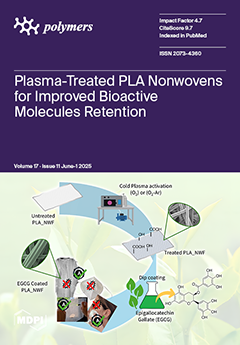Anion exchange membranes are utilised in cutting-edge energy technologies including electrolysers and fuel cells. Recently, these membranes have also emerged as a promising tool in CO
2 capture techniques, such as moisture-driven direct air capture and the separation of CO
2 from other gases, leveraging the moisture-induced sorption/desorption and diffusion of CO
2 in its ionic forms. In this study, we examine the absorption and permeation of CO
2 and CH
4 in two commercially available anion exchange membranes, Fumasep
® and Sustainion
®, under dry conditions. With the exception of CO
2 sorption in Fumasep
®, these measurements have not been previously reported. These new data points are crucial for evaluating the fundamental separation capabilities of these materials and for devising innovative CO
2 capture strategies, as well as for the simulation of novel combined processes. In a dry state, both materials demonstrate similar CO
2 absorption levels, with a higher value for Sustainion
®. The CO
2 solubility coefficient decreases with pressure, as is typical for glassy polymers. Fumasep
® exhibits higher CO
2/CH
4 ideal solubility selectivity, equal to ~10 at sub-ambient pressures, and higher diffusivity. The CO
2 diffusion coefficient increases with the CO
2 concentration in both membranes due to swelling of the matrix, varying between 0.7 and 2.2 × 10
−8 cm
2/s for Fumasep
® and between 1.6 and 9.0 × 10
−9 cm
2/s for Sustainion
®. CO
2 permeability exhibits a minimum at a pressure of approximately 2–3 bar. The CO
2 permeability in the dry state is higher in Fumasep
® than in Sustainion
®: 3.43 and 0.72 Barrer at a 2-bar transmembrane pressure, respectively. The estimated perm-selectivity was found to reach values of up to 40 at sub-ambient pressures. The CO
2 permeability and CO
2/CH
4 estimated perm-selectivity in both polymers are of a similar order of magnitude to those measured in fluorinated ion exchange membranes such as Nafion
®.
Full article






